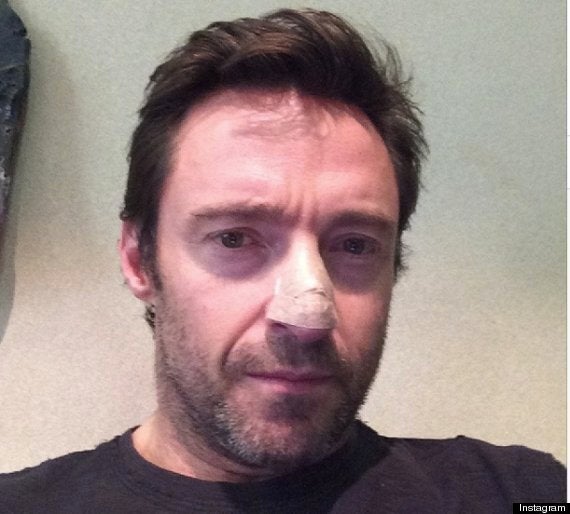Actor Hugh Jackman has been recently diagnosed with basal cell carcinoma - a form of skin cancer - that was successfully treated and removed.
But after posting a picture on his Instagram, he urged people to have any newly appeared marks checked.
"Deb said to get the mark on my nose checked. Boy, was she right! I had a basil [basal] cell carcinoma. Please don't be foolish like me. Get yourself checked. And USE sunscreen!!!" - he wrote on his profile.

Basal cell carcinoma is a slow growing cancer of the basal cells, especially common on sun-exposed area of the skin, particularly the nose but it can appear anywhere.
People at high risk include those with light or red hair, light-colored eyes, light-colored skin or freckles or moles, a family history of skin cancer, early-life sunburns and high exposure to the sun, as well as those who regularly use tanning beds.
We asked Dr Virginia Hubbard, Consultant Dermatologist at London Bridge Hospital and she kindly gave us insight into the types of skin cancers, early detection, prevention and when to seek medical help.
See Also:
Simple Blood Test Could Detect Skin Cancer Spread
Skin Cancer Treatment: Liquorice Root May Fight Malignant Melanoma
What types of skin cancer are there?
"There are varying types of skin cancer. Dermatologists describe these as melanoma or non-melanoma skin cancers.
"Melanoma (cancerous moles) has, in general, the most potential of causing serious health problems if not treated early."
Why is it important to detect skin cancer early on?
"If a melanoma is detected and treated early, before it has a chance to spread deep into the skin or to lymph glands and other parts of the body, there is a higher chance of the patient doing well and having no further problems.
"Around three in every four people diagnosed and treated with melanoma have no further problems once the cancerous mole is removed."
How often should you check your moles?
"I recommend people examine their own skin every month. People with fair skin, who burn easily, and people with lots of moles should take particular care, as these people are more likely to develop a skin cancer.
What should you be checking for when you examine your moles?
"When examining moles, first, look for any new moles. Second, look for changes in existing moles.
"These changes can be remembered by the ABCD-E rules:
- A – Asymmetry. The shape of the mole is not even in the 2 halves.
- B – Border. The edge of the mole is irregular.
- C – Colour. There may be different colours within a mole - pink, brown, black or white. In general, if a mole has 3 or more colours within, then it needs to be assessed by an expert. Any change in colour should also trigger a visit to the doctor.
- D - Diameter. Cancerous moles are usually bigger than 6mm in diameter. Also, any increase in size should be noted.
- E – Expert. If in any doubt, seek advice from your doctor. If your GP is concerned, then you will be referred to a dermatologist.
Do you have any tips on keeping track of mole changes?
"Taking digital photographs of the skin can be a useful aid in monitoring any changes in existing moles or the development of new moles.
"Ideally photos of all the body areas should be recorded – chest, tummy, upper and lower legs (front and back), back, arms, face and scalp. Having a friend, partner or family member to help with ‘spot the difference’ can make things easier, especially for areas such as the back and scalp."
Is there anything else (other than moles) that could indicate skin cancer?
"Often melanomas look like a flat discoloured brown or black patch, that spreads out over time.
"Other melanomas present as discoloured lumps on the skin. Sometimes a melanoma can present with a new bleeding lump on the skin.
"Aside from melanoma, there are other types of skin cancer, that look different.
"These may present as a new crusted or bleeding patch or lump or as an ulcer or break in the skin. As with melanoma, the early these other types of skin cancer are detected, the better."
When should you seek medical help?
"As you notice a new mole or any of the above changes in a mole.
The key steps to limiting your risk of skin cancer:
- Check your skin regularly. If in any doubt about any changes in a mole, seek expert help.
- Avoid sunburn of your skin. Use a sunscreen of at least SPF30, with UVA protection too.
- Use twice as much sunscreen as you think you need – most people apply it far too thinly. Make sure you reapply every hour or so, especially if sweating or after swimming.
- Stay out of the sun between 11am and 3pm.
- Keep babies and children out of the sun. Use UV protective suits and hats with brims and keep them in the shade where possible.